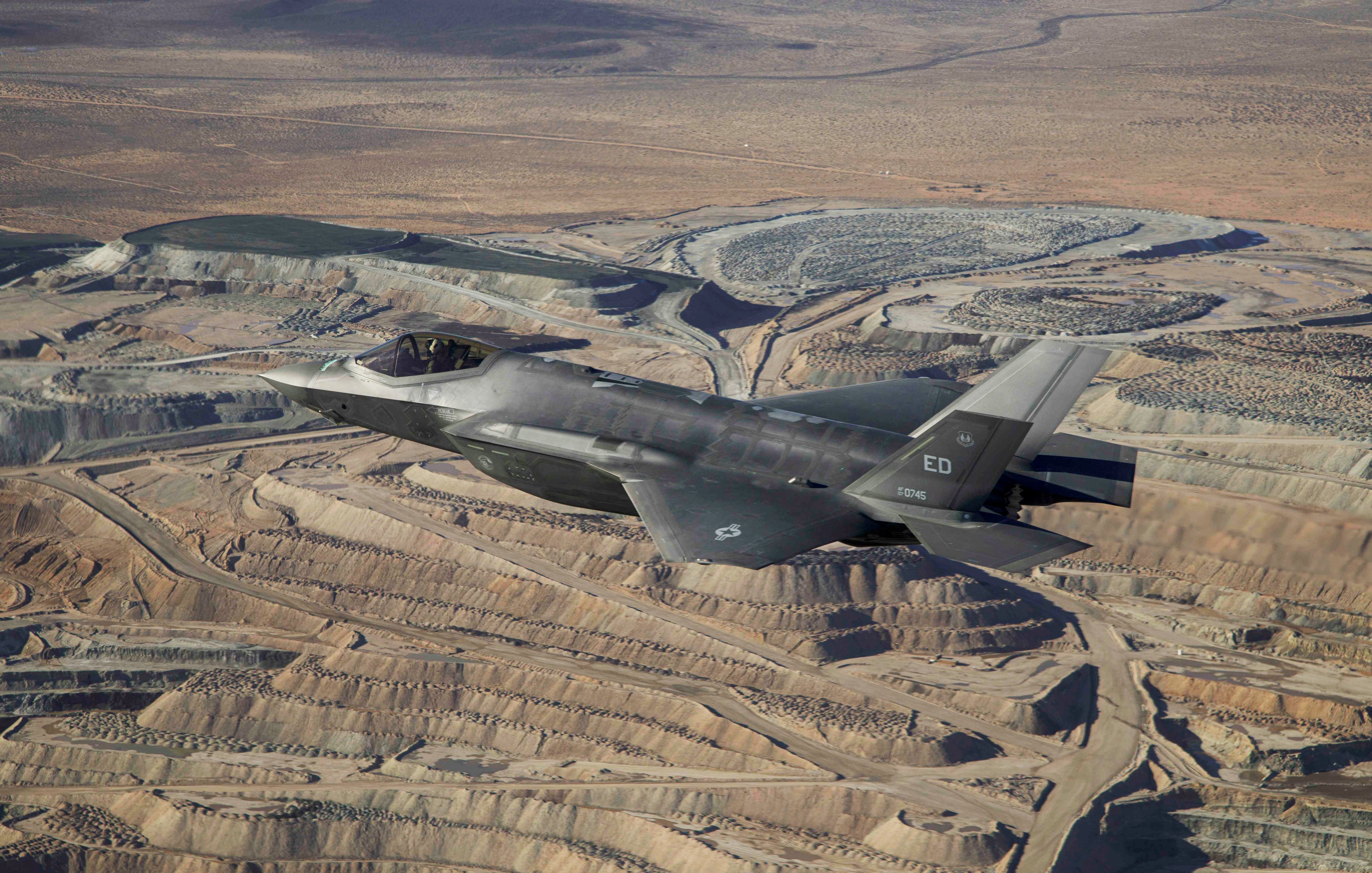WASHINGTON — The U.S. Air Force on Friday conducted the first test flight of an F-35 loaded with a series of upgrades known as Technology Refresh 3.
The successful test flight marks a step toward loading the fighter with improved computer memory and processing power, and it lays the groundwork for a major modernization effort known as Block 4.
The 461st Flight Test Squadron conducted the 50-minute test flight of the F-35A, which had the tail number AF-7, at Edwards Air Force Base in California, the F-35 Joint Program Office said Tuesday.
Experimental test pilot Maj. Ryan “Bolo” Luersen flew the jet to an altitude of 35,000 feet and at nearly Mach speed as he verified its airworthiness and system stability.
Technology Refresh 3 includes software and hardware upgrades for the Lockheed Martin-made F-35 to improve its displays, memory and computer processing power, which will allow the fighter to store and process more data as well as run advanced software.
“This is a significant achievement for the F-35 program,” said Lt. Gen. Mike Schmidt, the F-35′s program executive officer. “TR-3 is the F-35′s critical computer processing electronics upgrade that will continue to provide all our pilots with the capability they need to be successful against any adversary.”
In a November 2022 interview with Defense News, Lockheed Martin’s director of F-35 domestic engagement, Edward Smith, said TR-3 will provide the “backbone” for Block 4.
Those capabilities will include new sensors, the ability to carry more long-range precision weapons, more powerful data fusion, increased interoperability with other platforms, and advanced electronic warfare capabilities, the Pentagon said. This will improve the F-35′s ability to spot, track and engage, as well as survive against, a variety of threats in the air, on the ground and in cyberspace, the Pentagon added.
The development of TR-3 proved difficult and more expensive than expected. Last year, the Government Accountability Office said the increased complication of TR-3 drove the cost of the Block 4 modernization effort up by $330 million in 2021.
The JPO’s statement acknowledged TR-3′s “technical complexity challenges,” but said it “is now on-track to deliver capability to the U.S. and its allies starting in 2023.”
“Lessons learned in the execution of the TR-3 program will be applied across the entire Block 4 modernization program,” the JPO said.

The first F-35s that will come with TR-3 already installed will be part of lot 15, which is now under construction. The finalized contract for lots 15 through 17 was announced Dec. 30, and Lockheed expects to start delivering lot 15 fighters in the second half of 2023.
The improved capabilities of this batch of fighters, including TR-3, are among several factors increasing the fighter’s average cost.
More developmental and operational test flights will continue throughout 2023 to ensure fighters loaded with TR-3 are safe, and the jet’s combat capabilities work.
Lt. Col. Christopher Campbell, commander of the 461st Flight Test Squadron and director of the F-35 Integrated Test Force, said TR-3 will “affect nearly every aircraft feature” in the future.
“Today’s event was just the start of a comprehensive flight test campaign that will both verify and improve the safety, stability and performance of the whole F-35 weapon system in this new configuration,” Campbell said.
Stephen Losey is the air warfare reporter for Defense News. He previously covered leadership and personnel issues at Air Force Times, and the Pentagon, special operations and air warfare at Military.com. He has traveled to the Middle East to cover U.S. Air Force operations.




